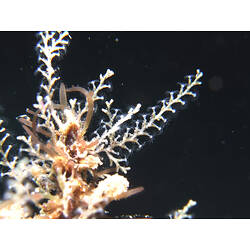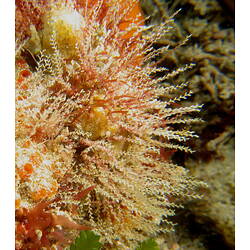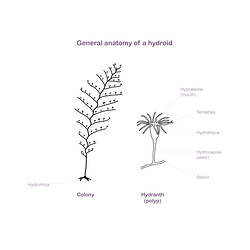General Description
Colony of individual polyps (hydranths) joined by root-like network of tubular stolons at the base. Colony shape is single stems. Colour: colony white, buff or yellow, eggs yellow to pink. Up to 1.5 cm high.
Biology
These hydroids are widespread in southern Australian seas although some are small and cryptic and therefore not easily seen. Their colonies grow throughout year.
Distribution
Recorded from southern oceans, including South Africa, New Zealand and Australia (South Australia, Tasmania, Victoria, Western Australia).
Habitat
Subtidal, epiphytic on algae. Common in sheltered waters and bays.
More Information
-
Animal Type
-
Animal SubType
-
Brief Id
Three marginal hydrothecal cusps, saw-tooth pattern of hydrothecae on the stem.
-
Maximum Size
15 mm
-
Habitats
-
Diet
Plankton or Particles
-
Diet Categories
Plankton
-
Hazards
Generally not harmful but still able to sting bare skin.
-
Endemicity
-
Commercial
No
-
Conservation Statuses
DSE Advisory List: Not listed, EPBC Act 1999: Not listed, IUCN Red List: Not listed
-
Depths
Shallow (1-30 m)
-
Water Column Locations
On or near seafloor
-
Taxon Name
-
Scientific Author
(Bale, 1882)
-
Common Name
Hydroid
-
Phylum
-
Class
-
Subclass
-
Order
-
Family
-
Genus
-
Species Name
indivisus





